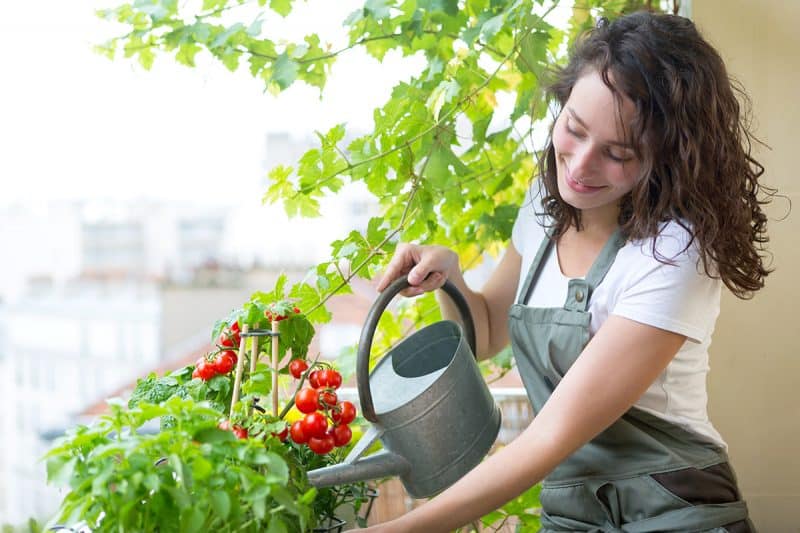Before you even start shopping for soil or seeds, you need to do two things. Do some research, and come up with a game plan. The type of research and planning needed should include the following:
- What does homesteading look like to you? Do you want to grow and preserve vegetables? Or do you want livestock?
- Write down the budget you have to work with.
- Can you already grow food plants? Or do you need to learn more?
- Do you have outdoor space available to you? What can you work with?
- How much time can you realistically devote to homesteading?
- What are the main practices you dream of? For example, do you want to raise goats for meat and milk? Or do you want to raise species for their fiber, like cashmere? If so, do you have the skills needed to harvest and process their hair?
- What are the building codes and zoning regulations in your area?
- Want to raise chickens? Check with local regulations to find out whether you’re allowed to do so in your area.
- Are there items that you normally buy that you could make yourself? If so, do you know how to do that already? If not, add them to your “skills I need to learn” notebook.
Basic Steps to Starting a Small Homestead
After you ask yourself all of the questions on things you could learn to do, plants you could grow, animals you could raise, etc. you need to list them out in priority level. What is it you dream of most? Then, before you buy property or move anywhere else, start right where you are.
Start Small as a Trial Run
Do you want a large permaculture homestead brimming with food? Begin with three or four species. Aim for one of each of the four used in traditional crop rotation: fruits, legumes, greens, and roots. Additionally, choose varieties that you can preserve later. For example:
- Tomatoes: Make sauce or salsa, and water bath can it.
- Climbing peas: Use a pressure canner to preserve these.
- Cabbages: Transform them into sauerkraut or kimchi.
- Carrots: Pickle with your favorite seasonings.

Take note of how you feel as you’re tending and preserving these plants. Do you feel overwhelmed? Or do you feel like you’re ready to take on more?
Be Aware of the Costs of Homesteading
Remember that budget we discussed earlier? Use it to do thorough research on various locales. If land is healthy and affordable where you are, great! Otherwise, be realistic about how far away you’re willing to move to make this happen.
Land is more affordable in places like Georgia or Arkansas in the USA, or Manitoba and the Yukon in Canada. But it’s important to weigh the pros and cons of settling and homesteading there. Can you handle the weather there? Is the soil makeup suitable for your needs?
Will you still be connected to a power grid? Or do you need to incorporate off-grid living into your plans? If it’s the latter, you’ll have to look into alternative electricity sources. Do research on the pros and cons of off-grid hydro, solar, and generator-based power options.
Estimated Costs
Of course, costs will vary wildly depending on where you live. What someone will pay in Napa Valley, California will be completely different from someone in rural Tennessee. But here’s an estimate of what you’ll need to get going.
- Land to live on and cultivate: let’s say $40,000
- Housing: If your land doesn’t already have a house on it, you can probably build your own. Then you’d be looking at permit costs, lumber, electric installation, etc. Unless you’re going the pioneer log cabin route (which would still require a building permit). Otherwise, you can plunk a double-wide trailer on the site for $55,000 (or about $300 a month).
- Water: If your land already has potable water, great! Otherwise, you could be looking at $3000 to $5000 to dig a well.
- Septic system: $1,500 plus a couple hundred $$ every other year for maintenance.
- Growing Vegetables: for growing vegetables, you’ll need seeds, soil amendments, tools (or replacements), canning supplies (including staples like salt and vinegar): $1400 annually
- Barn (optional, if keeping livestock) $3,000 to $8,000 on average
- Chicken coop: $500
- Chickens: $50 to $100 per year for chicks, as well as about $350 for year-round chicken feed, mite protection, heating lamps, etc.
- Off-grid electricity: $2,500 a year on average
As you can see, starting out in homesteading can be quite costly, depending on which approach you choose. Check out our article entitled Urban, Suburban, and Rural Homesteading: Which Type Is Right for You? It’s full of helpful tips that can assist your location decisions.

Responses